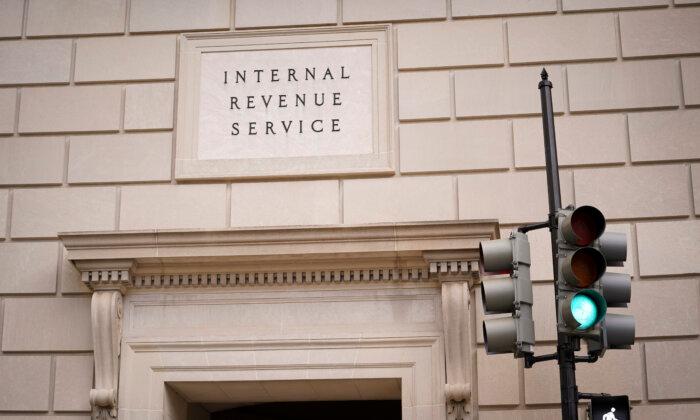The Internal Revenue Service (IRS) raised the standard mileage rates used to calculate tax deductions for vehicles used by businesses, bumping it up 1.5 cents per mile starting next year.
Businesses and charities can deduct the cost of operating a vehicle they use for official purposes in their tax returns. One way of calculating operating costs is the “Standard Mileage Rate,” which involves multiplying the number of business miles traveled by a vehicle by the mileage rate set by the IRS. On Dec. 14, the tax agency announced an increase in the standard mileage rate for business use of cars, vans, pickups, and panel trucks beginning Jan. 1, 2024. The mileage rate has been bumped to 67 cents per mile driven for business use, up 1.5 cents from this year. The rate is 11 cents or 19.64 percent higher compared to 2021.
For vehicles driven by charitable organizations, the mileage rate is set at 14 cents per mile, unchanged from 2023. As to vehicles driven for medical or moving purposes for qualified active-duty members of the Armed Forces, the rate is 21 cents, down 1 cent from this year.
The new mileage rate applies to “electric and hybrid-electric automobiles as well as gasoline and diesel-powered vehicles.”
Rather than using IRS mileage rates, taxpayers can choose to use the actual costs of using their vehicle for tax deductions. However, if they go for the IRS mileage rate, taxpayers “generally must opt to use it in the first year the car is available for business use.”
“Then, in later years, they can choose either the standard mileage rate or actual expenses. Leased vehicles must use the standard mileage rate method for the entire lease period (including renewals) if the standard mileage rate is chosen,” the IRS states.
While businesses use standard mileage rates to calculate deductible automobile expenses, the federal government and some businesses use it as a benchmark to reimburse their employees for the miles they have traveled.
Mileage Rate Deductions
The IRS’s decision to increase the standard mileage rate comes as fuel prices have fallen. Since the summer of 2022, fuel prices have declined by over 20 percent.Meanwhile, vehicle acquisition costs have increased and depreciation has accelerated, due to which the overall cost of vehicle ownership has risen, Phong Nguyen, the CEO of mobile workforce management software firm Motus, told the human resources membership association SHRM.
“There are many factors contributing to increased driving costs,” he said. “It’s important for business leaders to prioritize their mobile employees who depend on their cars for work by providing the best reimbursement methodologies for individual costs related to owning and operating a vehicle.”
The IRS standard mileage rate deduction for “medical purposes” is only applicable if the vehicle is driven for medical reasons like driving to a doctor, health care facility, or hospital; driving a person who needs medical care to a medical facility; and driving to see mentally ill dependent individuals if such visits are recommended as a treatment.
The deduction for “moving purposes” is only applicable to “members of the Armed Forces on active duty moving under orders to a permanent change of station,” according to the IRS.
To deduct mileage for charity, medical, and moving purposes, taxpayers will need to itemize them on tax returns to claim a deduction. As such, they will have to file tax forms Schedule A and Form 1040 as well as supporting forms.
Criteria for Standard Mile Reductions
In addition to deducting operational costs, businesses can deduct the entire cost of ownership of their car provided the vehicle is solely used for business purposes. In case the car is used for both personal and business purposes, only the operating cost for business use can be deducted.In order to use the standard mile rate of deduction, the business must either own or lease the car. “You must not operate five or more cars at the same time, as in a fleet operation. You must not have claimed a depreciation deduction for the car using any method other than straight-line. You must not have claimed a Section 179 deduction on the car,” according to the IRS.
In addition, “you must not have claimed the special depreciation allowance on the car, and you must not have claimed actual expenses after 1997 for a car you lease.”
If businesses opt to deduct the actual expenses of operating the car rather than the standard mile rate, they should determine the true cost of operating the vehicle for business use. This should take into account expenses like gas and oil, tires, licenses, insurance, registration fees, and depreciation or lease payments.
Certain car expenses like toll and parking fees are deducted separately. The IRS requires that businesses substantiate their expenses by maintaining “adequate records or by sufficient evidence” to support such expenses.







